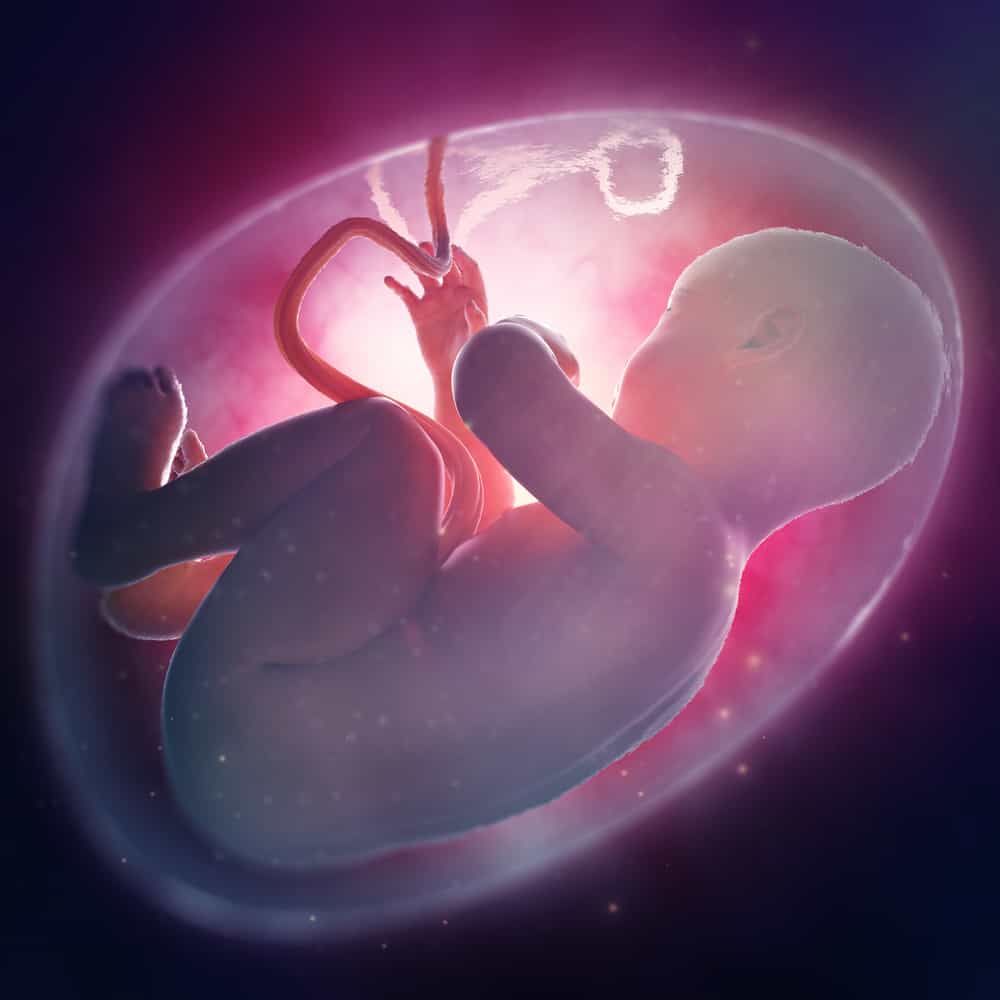What is the Placenta? These are the facts you need to know about Ari-Ari Bayi

During pregnancy, there is one organ that is very useful for keeping the baby alive, namely the placenta. Not only that, this organ can also affect the growth and development of the fetus in the womb. Actually, what is the placenta and how much does it affect mother and baby? This is the explanation!
What is the placenta?
Quoted from the Mayo Clinic, the placenta or placenta is an organ that develops in the uterine area during pregnancy.
Usually, the placenta is attached to the top, side, front, or back of the uterus.
The main benefit of this baby’s placenta is to provide oxygen and nutrients so that the fetus develops in the womb.
Oxygen and nutrients are carried through the mother’s bloodstream and then penetrate the placenta. From here, the umbilical cord connected to the baby carries the oxygen and nutrients.
Through the placenta, the baby can also get rid of substances he does not need, such as carbon dioxide. Then, it is passed into the mother’s bloodstream to be excreted by the system in the body.
The placenta also produces hormones that you need during pregnancy, such as oxytocin, lactogen, estrogen, and progesterone. This can protect the baby from infection.
Towards the end of pregnancy or into labor, the placenta works by passing on antibodies to protect the newborn.
Therefore, newborns have immunity for almost 3 months.
How is the placenta formed?
At 3 weeks of gestation, the follicle in the ovary (called the corpus luteum) sheds.
Then, it begins to produce the hormone progesterone and provides nutrients to the fetus during the first trimester of pregnancy.
At 4 weeks of gestation, some of the cells attached to the uterine wall separate and dig deeper into the uterine wall.
One of these cells is responsible for forming the placenta of the baby which then takes over the task of the corpus luteum in the second trimester of pregnancy.
The next two months, the placenta grows and gets bigger so that it is able to provide more oxygen and nutrients to the baby.
At the 12th week of pregnancy, the placenta has complete structure and will continue to grow in size as your baby grows.
What can affect the health of the placenta?
The placenta or placenta is a life support in the womb, so the baby’s health also depends on the health of this protective organ.
Here are several factors that can affect the health of the placenta during pregnancy.
- Mother’s age. Usually, pregnant women who are over 40 years of age have a higher risk of developing placenta problems.
- The membrane shed prematurely or if the amniotic sac ruptures before the birth of the baby.
- High blood pressure.
- Multiple pregnancy.
- Blood clotting disorders.
- Have had surgery on the uterus.
- Substance abuse. Smoking or substance abuse during pregnancy.
- Abdominal (abdominal) trauma. If you have experienced trauma to the stomach such as a fall or have had a blow to the stomach.
What are the placental disorders that can occur?
Under normal conditions, the location of the attachment of the placenta should be at the top or side of the uterus, not below.
When this condition occurs, there is a chance that you may experience problems or problems with the placenta.
In addition, here are some other disorders that can occur in the placenta during pregnancy, such as:
You need to be careful when experiencing some of the problems with the baby above because they can lead to pregnancy complications.
Therefore, you as a pregnant woman need to regularly consult and carry out pregnancy checks to ensure that the baby’s placenta is in good health.
How is the placenta removed from the body?
After the baby is born and the umbilical cord is cut, the placenta or placenta will also leave the body because it is no longer needed.
The body will still experience light contractions or shortly after the baby is born which aims to push the placenta out of your body.
If the body does not experience contractions after the baby is born, the midwife or doctor may give drugs to stimulate the contractions and help the baby’s placenta come out.
It should be noted that stimulating contractions using the drug oxytocin can also prevent heavy bleeding in the mother.
Then, the doctor or midwife will massage the lower abdomen to push the uterus to trigger contractions so that the baby’s placenta comes out.
Breastfeeding your baby as soon as the baby is born can also help cause your uterus to contract, thus helping to push the placenta.
If you give birth by caesarean section, the doctor will also remove the placenta from the body after the baby is born.
The doctor or midwife will make sure that the placenta has left your body so that nothing is left and the uterus is clean again.
Hello Health Group does not provide medical advice, diagnosis or treatment.
Know the role the placenta plays in pregnancy. (2021). Retrieved 16 February 2021, from https://www.mayoclinic.org/healthy-lifestyle/pregnancy-week-by-week/in-depth/placenta/art-20044425
What is the placenta? (2021). Retrieved 16 February 2021, from https://www.pregnancybirthbaby.org.au/what-is-the-placenta
Burton, G., & Fowden, A. (2015). The placenta: a multifaceted, transient organ. Philosophical Transactions Of The Royal Society B: Biological Sciences, 370 (1663), 20140066.doi: 10.1098 / rstb.2014.0066
Burton, G., & Jauniaux, E. (2018). Development of the Human Placenta and Fetal Heart: Synergic or Independent ?. Frontiers In Physiology, 9. doi: 10.3389 / fphys.2018.00373
Burton, G., & Jauniaux, E. (2015). What is the placenta? American Journal Of Obstetrics And Gynecology, 213 (4), S6.e1-S6.e4. doi: 10.1016 / j.ajog.2015.07.050
Is Your Newborn Baby’s Immune System Strong Enough ?. (2017). Retrieved 16 February 2021, from https://health.clevelandclinic.org/is-your-newborn-babys-immune-system-strong-enough/